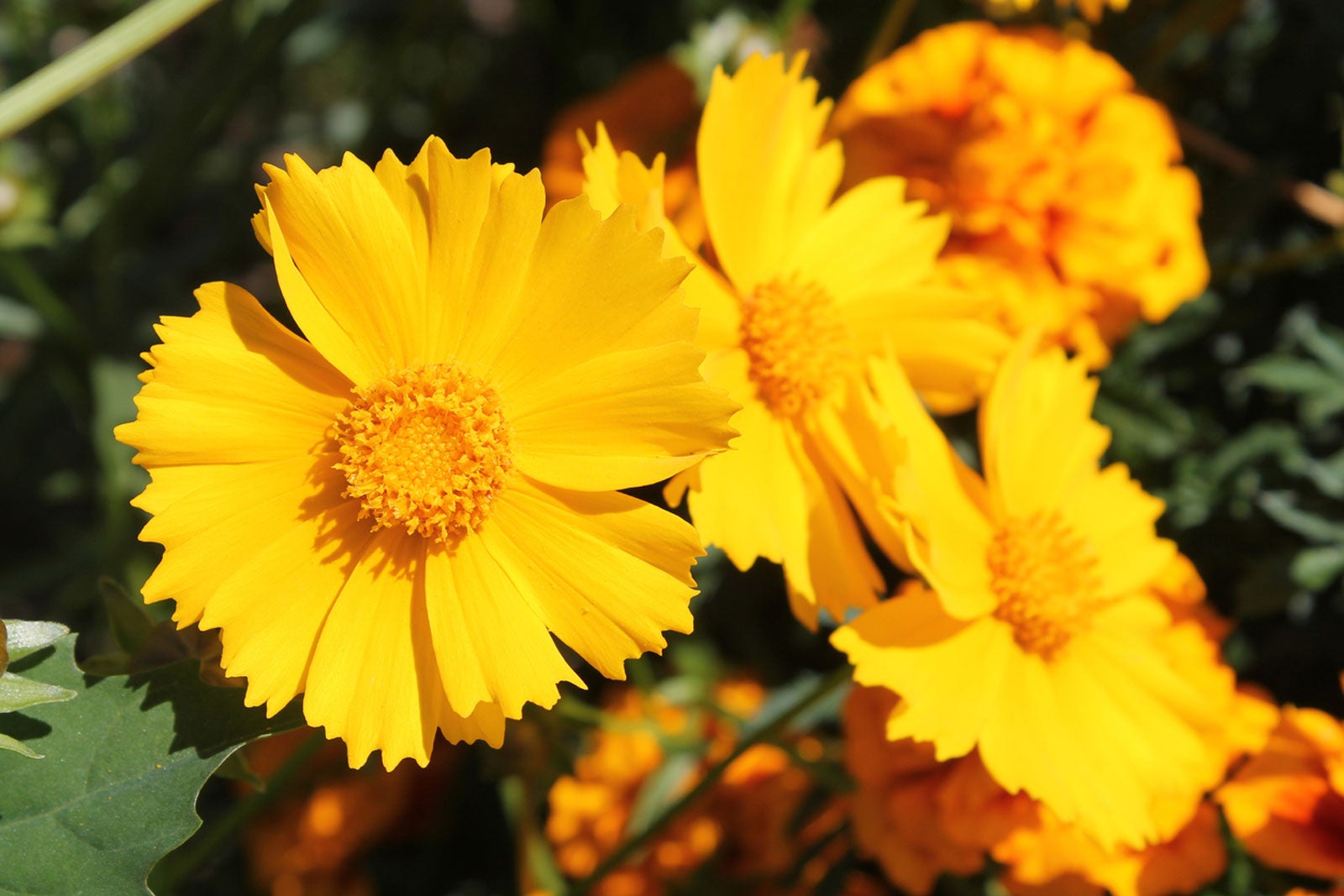Coreopsis (Tickseed): Complete Plant Care & Growing Guide
Planting coreopsis gives gardens, containers, and borders a bright splash of color, and invites our beloved pollinators to come for a visit. Easy to plant, they are reliable and colorful.

Coreopsis is a stunning addition to the summer perennial garden. Also known as tickseed, coreopsis plants are excellent in containers, mixed borders, and naturalized plantings. These bright blooms bring a dependable burst of color to your home landscape and are highly attractive to pollinators.
Though coreopsis plants are fairly easy to grow, learning more about their needs can help you tend to and care for the coreopsis flower. Here are some basic guidelines for how to grow and care for coreopsis tickseed plants.
Quick Facts
- Botanical name: Coreopsis
- Height : 12-36 inches (30-91 cm)
- Spread: 12-24 inches (30-61 cm)
- Sun exposure: Full Sun
- Soil requirements: Neutral, Well-Draining
- Hardiness zones: USDA Zones 4-9
- When to plant: Spring, Fall
How To Grow And Care For Coreopsis (Tickseed) Plants
Light
Coreopsis plants grow best where they can receive bright, direct sun throughout the majority of the day. Ample sunlight aids in the production of flowers and improves their overall vigor. Though it is possible to grow coreopsis plants in shaded areas, a lack of sunlight will have a negative impact on their bloom.
Water
Once they’re established, coreopsis plants only seldom need supplemental irrigation. This makes the plant a good choice for water-wise gardens and for growing in regions that are especially prone to drought. However, coreopses grown in containers will still require weekly watering to look their best.
Temperature & Humidity
Sign up for the Gardening Know How newsletter today and receive a free copy of our e-book "How to Grow Delicious Tomatoes".
Coreopsis plants flourish in regions with warm summer weather. They can withstand adverse conditions, but periods of extreme heat can cause stress in some cultivars.
Coreopses have a notable tolerance for high humidity. Within its recommended range, coreopsis seldom suffers from damage done by the cold.
Soil
Coreopsis plants are adaptable to a wide range of soil types, including both sandy and rocky beds. The plant’s versatility further lends itself to growth in soils with less-than-ideal fertility, but it’s still important to provide the plant with an environment that has excellent drainage. This is especially important throughout winter, as excessively wet soils will contribute to rot and loss of plants.
Fertilizer
Fertilizing the coreopsis is generally not recommended. Amending the soil with compost will help new plantings establish themselves quickly. Soils that are too rich may cause the plant to become overly tall or wiry. If you do choose to feed your coreopsis, do so using a well-balanced, granular feed. This is most often done in early spring, just as growth resumes.
Problems, Pests & Diseases
As a wildflower, coreopsis plants are relatively free of most pests and diseases. Excess moisture can become problematic, as root and crown rot may become an issue. Other common issues among coreopsis plants include leaf spot and powdery mildew. Fortunately for growers, both can be prevented through the use of good planting practices and proper garden sanitation techniques.
How to Grow Coreopsis from Seed
Coreopsis seeds germinate readily. This means they can be sown directly into prepared garden beds. For frost-tolerant varieties, this can be done in fall or very early spring as soon as the soil can be worked. Gardeners can also successfully start their seeds indoors in trays. Coreopsis seeds generally germinate within 1-2 weeks.
Deadheading Coreopsis
This plant benefits greatly from deadheading. Once they’re spent, coreopsis flowers can be removed by clipping the stem back to the nearest set of healthy leaves. Rather than clipping individual flowers, you may prefer to evenly shear the plants after the first flush of buds have faded. This process helps to encourage prolonged bloom and will prevent the plant from setting seed.
Propagation
Though most plants are started from seed, you can multiply many species of coreopsis through cutting and division. When they are placed in a moist medium, small stem segments will begin to take root quickly. Established plants benefit from division every 2-3 years. When they are dormant, the plants can be removed from the soil and carefully cut into smaller sections. Newly rooted cuttings and/or divisions can either be potted into containers or moved directly into the garden.
Growing Coreopsis in Pots
Planting coreopsis in pots is a good choice for those with limited growing space. Small, dwarf varieties are especially suitable for containers. Potted coreopses require special attention throughout the season, particularly concerning moisture. Make certain your soil conditions are ideal. As the plant is known to grow quickly, expect to divide and/or repot your containers annually.
Coreopsis Varieties
Here’s a short list of some favorite varieties of coreopsis, or tickseed:
American Dream Coreopsis
Double the Sun Coreopsis
Incredible Coreopsis
Sunburst Coreopsis
Sunfire Coreopsis
Frequently Asked Questions
Is Coreopsis a Perennial?
If you’re interested in growing coreopsis you’ll need to research each specific species. There are both annual and perennial varieties, and a little research will help growers better understand how the plant will behave within their own landscape. While perennials are considered a dependable addition to the garden, many annual varieties boast a unique tolerance to cold and an early bloom time.
Why Is Coreopsis Called Tickseed?
Coreopsis is commonly referred to as “tickseed,” earning its namesake from the seed’s flat, tick-like appearance. Though ticks may occasionally be found on or near the plant, there is no evidence to support the assumption that coreopsis will attract ticks to the garden.

Becca Badgett was a regular contributor to Gardening Know How for ten years. Co-author of the book How to Grow an EMERGENCY Garden, Becca specializes in succulent and cactus gardening.

